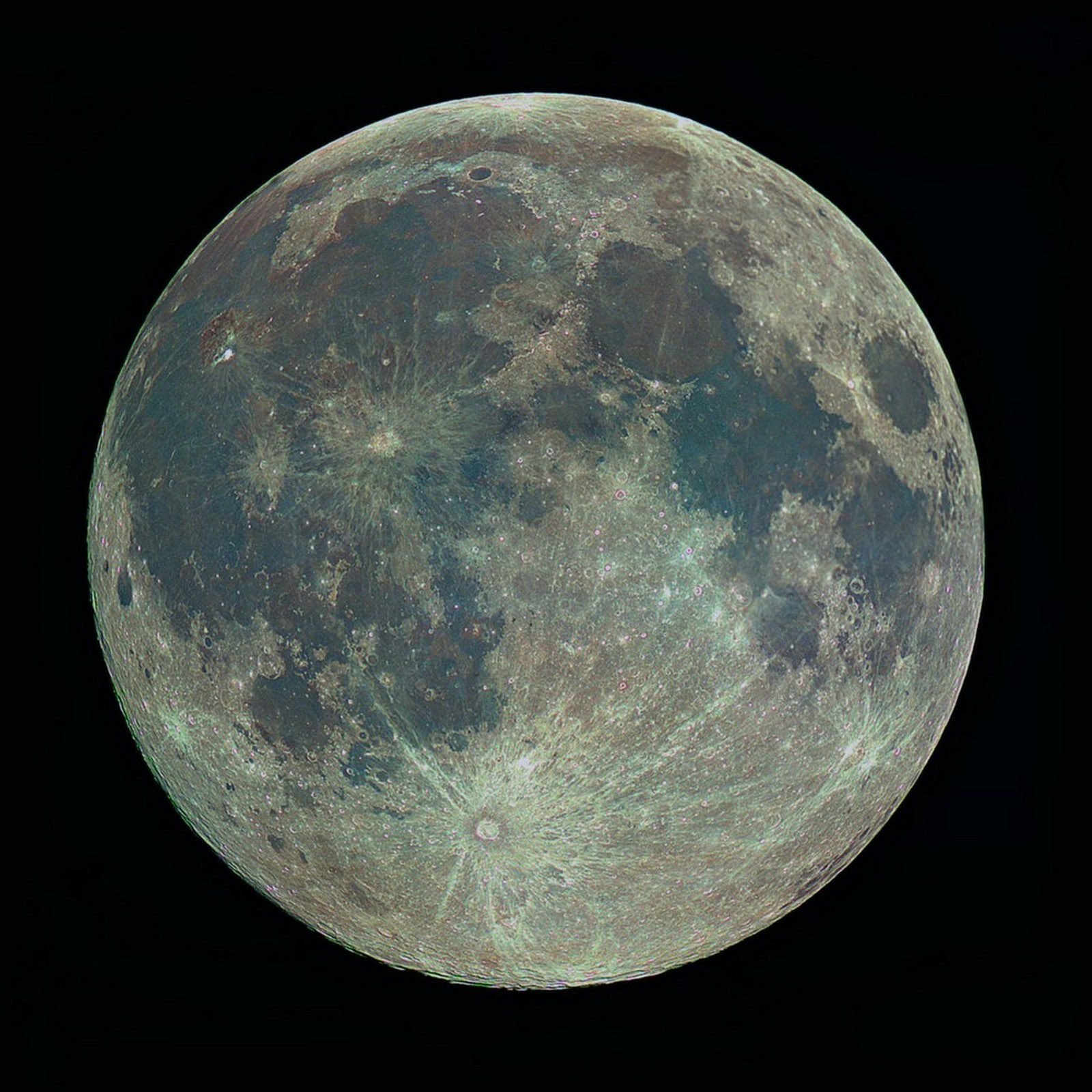June 26, 2013
Rigabigadiga

image by Thomas Walker, T.O.M.S. Observatory, Mississippi
Every color image forces us to look at the Moon differently than we normally see it. Instead of shades of gray we see pink, green, very light blue, gun-metal blue, mauve, yellow-brown and even white. Without calibration, as was done for the famous Clementine color images, it is difficult to exactly
characterize the these different hues or even to be sure that a particular shade at one place has the same reflectance ellsewhere. None-the-less, the
different colors do represent some differences in surface compositions that are intriguing to investigate. The different titanium compositions are well
seen in the mare lavas of Imbrium and especially at the sharp boundary in Sinus Roris. The green-hued rays of highlands impact craters are conspicuous,
but the mare craters Aristillus and Copernicus do too, although the colors don't seem as strong. The most intense green rays are for Bygrius A over near
Orientale. A number of crater rims are quite bright and often they have pink interiors and surrounding nimbus. Godin is a colorful example, as are nearby
Pickering, Hipparchus C, Alfraganus, and Kant. Abenezra A is another fresh crater with a dark pink nimbus. I speculate that these are collars of
impact melt, as at Tycho, but more intensely colored because these craters may be younger than Tycho. This may not be the explanation, however,
because the LRO NAC images don't reveal any obvious impact melt ponds around Abenezra A. If not melt what causes the pink collars?
Chuck Wood
Technical Details
T.O.M.S. = Top of Mississippi Skies
Jun 23, 2013, 0700 UTC. TMB-130 Apochromatic refractor at f/7 through an ImagingSource DBK-41 video camera, mounted on a Celestron CGE-Pro
mount. The 'super moon" image is a mosaic of 6 sub-images, each from the stacking of the best 300 of over 2000 AVI frames in Registax 6 and
assembled in PhotoShop. Final sharpening and tweaking performed in ImagesPlus v5.5. No colors were harmed in the making of this image; they were
only enhanced.
Yesterday's LPOD: Interrupted Grazes
Tomorrow's LPOD: Was This a Super Moon?
COMMENTS?
Register, Log in, and join in the comments.



